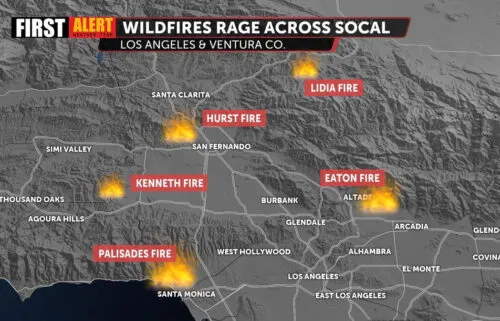Children make up more than a quarter of the weekly US Covid-19 cases, pediatricians’ group says
By Jacqueline Howard, Amir Vera and Madeline Holcombe, CNN
Children now represent more than a quarter — or 26.8% — of weekly Covid-19 cases nationwide, according to data released Tuesday from the American Academy of Pediatrics (AAP).
The update comes as schools across the US have been in session or are getting into full swing. Experts have encouraged adults to get vaccinated to protect young children returning to the classroom.
“If we want to protect the children, particularly those who are not yet eligible for vaccination, you want to surround the children with people who are vaccinated — teachers, school personnel, everyone else,” Dr. Anthony Fauci, director of the National Institute of Allergy and Infectious Diseases, said Tuesday.
Some 251,781 child cases of Covid-19 were reported in the past week (August 26-September 2). That number represents more than a quarter of the 939,470 cases total that were reported over that period.
In each of the previous two weeks, children represented about 22% of the weekly reported cases. The definition of a child varies by state but generally includes those up to age 17 or 18.
“After declining in early summer, child cases have increased exponentially, with over 750,000 cases added between August 5 and September 2,” the AAP’s data said.
Despite the alarming rise in cases, it still appears that severe illness due to Covid-19 is uncommon among children at this time, according to AAP.
“There is an urgent need to collect more data on longer-term impacts of the pandemic on children, including ways the virus may harm the long-term physical health of infected children, as well as its emotional and mental health effects,” the academy said.
So far, more than 5 million children total have tested positive for Covid-19 since the start of the pandemic, representing 15.1% of all cases in the United States.
Meanwhile, case numbers are up for a rare complication linked to Covid-19 in children — multisystem inflammatory syndrome or MIS-C, the CDC said Tuesday. While rare, MIS-C tends to appear a few weeks after a child has been infected with Covid-19. Many MIS-C cases follow a Covid-19 infection that had no symptoms.
The number of cases — counted through August 22 — represents a 6% increase from late July, according to the CDC. As of August 22, 41 children have died from MIS-C, a more than 10% increase in deaths from the month before and one of the largest increases this year.
Many students head back with no school nurses
The situation of increasing child Covid cases is made even more concerning as an estimated quarter of schools to which students are returning don’t have a school nurse. The CDC recommends that schools have one full-time nurse for every 750 students.
Based on the latest data from a national school nurse workforce study, published in the Journal of School Nursing in 2018, approximately 39% of schools employ full-time nurses and about 35% employ part-time school nurses, while 25% do not employ school nurses. Experts emphasize that the nation has had a shortage of school nurses for years, but the pandemic now sheds light on just how dire the shortage has become.
Schools in the rural regions appear to be “significantly more likely” than schools in urban areas to report having no nurse at all, according to the study published in the Journal of School Nursing in 2018. In that study, 23.5% of rural schools report having no nurse compared with 10.3% of urban schools.
“Funding is a key issue. There is an inconsistent mishmash of state and local funding that puts small rural school districts with inadequate tax bases at a disadvantage,” Laura Searcy, a pediatric nurse practitioner who is a past president of the National Association of Pediatric Nurse Practitioners and a fellow of the American Association of Nurse Practitioners, told CNN.
“And those areas also are likely to have a shortage of primary care pediatric health care providers as well.”
Daily Covid-19 case average is more than 3 times higher than it was last year
The country’s Covid-19 case rates have generally soared since the start of the summer as the highly contagious Delta variant spread — and the current average is more than three times higher than it was a year ago.
The United States’ seven-day average of new cases Monday (137,270 daily) dwarfs the average seen on Labor Day of last year (39,355 daily), according to Johns Hopkins University data.
Hospitalizations and daily Covid-19 deaths also have risen lately, and where these counts go from here is “up to us,” Fauci told CNN on Tuesday.
“We have 75 million people in this country who are eligible to be vaccinated who are not yet vaccinated. If we get the overwhelming majority of (these people) vaccinated, we could turn this around even as we go into the cooler weather of the fall,” Fauci said.
This comes as President Joe Biden is set to deliver a major address on the next phase of his pandemic response this week, two sources familiar with the speech tell CNN.
While officials were still finalizing specifics, the speech will have multiple components related to schools, private companies and requirements for federal employees, the sources said.
Average daily cases have wobbled downward in the past few days — but they still are more than 12 times higher than what they were at the start of summer, when the Delta variant gained dominance.
Cases jumped after June 22, when the US saw its lowest average of 2021 (11,303 per day), according to Johns Hopkins.
The jump in cases has translated into overcrowded hospitals and a rise in infections among children — of particular concern as many students return to their classrooms. And experts fear that a holiday weekend could make matters worse.
More than 99,800 Covid-19 patients were in US hospitals on Monday. That number has dipped in recent days, but still is significantly higher than June 29, when the country saw a 2021 low of 16,152, according to the US Department of Health and Human Services.
Last week, Centers for Disease Control and Prevention Director Dr. Rochelle Walensky advised unvaccinated Americans not to travel for the holiday and reminded vaccinated people that the high rate of virus transmission meant that it could be risky for them to travel as well.
The risk played out last year, when cases surged in 31 states and the positivity rate went up in 25 of them only two weeks after the Labor Day holiday.
Besides the Delta variant, one difference between this year and last is that Americans over 12 years old can get Covid-19 vaccines, which experts say is the best defense against the virus.
But only 53% of the total US population is fully vaccinated, and just 62% of eligible Americans are, according to the CDC, leaving tens of millions very vulnerable.
As for deaths: The US averaged more than 1,469 Covid-19 deaths a day over the past week as of Monday, according to Johns Hopkins — a little lower than it was just days ago, but still significantly higher than the low average of 2021, which was 218 daily back on July 5.
The US has now tallied more than 40 million Covid-19 cases across the pandemic, with more than 4 million of them reported in the last four weeks alone, according to data from Johns Hopkins University.
The count comes with a caveat: 40 million represents just officially reported positive test results, and many experts believe the actual number of infections is much larger.
West Virginia governor frustrated at booster pace
The US Food and Drug Administration is set to meet September 17 to discuss Covid-19 booster shots.
Last month, the White House said people who got the two mRNA vaccines — the two-shot vaccines made by Pfizer/BioNTech and Moderna — may receive boosters starting September 20, assuming a certain number of months passed after a person’s second shot, and assuming clearance by the FDA and the CDC.
Up to 5.2 million people could be eligible to receive a booster shot during the week of September 20, according to the CDC data. About 3.4 million United States residents were fully vaccinated by January 20, which would make them eligible for a booster shot eight months later on September 20.
Fauci said that while the Biden administration still hopes to begin boosters for Pfizer recipients starting September 20, the OK for Moderna boosters could follow a couple weeks later.
“They’re probably no more than a couple of weeks behind, if that much,” Fauci said of Moderna.
In West Virginia, Gov. Jim Justice said Monday that he is eager for the boosters to begin.
“If we could just get the go-ahead from our government to absolutely start administering these booster shots, we would be all over that and we’ll be doing that immediately,” Justice said. “We’re ready to go.”
Justice accused the federal government of holding up West Virginia from leading in its Covid response.
“We’ve got people that are well beyond six months that are 60 and older that need the booster shot. And we can’t give it to them because we’re being held up by, you know, the nation and on the federal level right now,” Justice said.
Researchers are looking into whether different types of Covid-19 vaccines can be mixed and matched.
“We’re lining up Pfizer against Pfizer, Pfizer for Moderna, and vice versa,” Fauci told CBS’ “Face the Nation” on Sunday. “Hopefully, within a reasonable period of time, measured in a couple of weeks, we will have that data.”
At this point, it is OK for healthy vaccinated Americans to wait and see what the CDC and FDA have to say before getting a booster dose, CNN medical analyst Dr. Leana Wen said. The most important thing is to get the unvaccinated their first two doses, she added.
The-CNN-Wire
™ & © 2021 Cable News Network, Inc., a WarnerMedia Company. All rights reserved.
CNN’s Amanda Watts, Jason Hanna, Deidre McPhillips, Carma Hassan, Leslie Perrot, Jacqueline Howard, Virginia Langmaid and Hannah Sarisohn contributed to this report.





